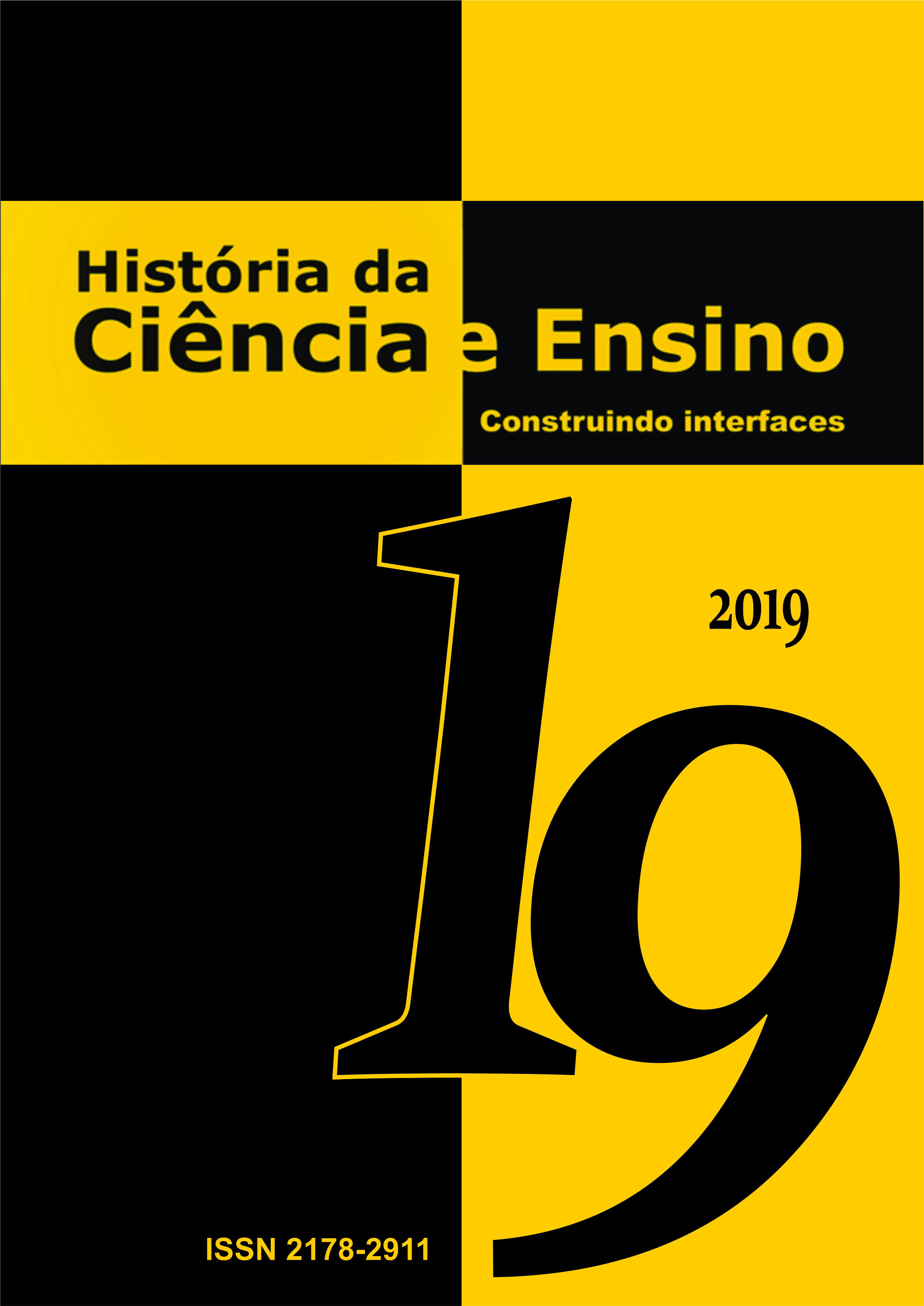Elementos iniciais da relação entre o instrumento de Pedro Nunes, jacente no plano, e o cálculo da latitude no século XVI
DOI:
https://doi.org/10.23925/2178-2911.2019v19p39-53Resumo
Resumo
No século XVI, a elaboração de certos instrumentos necessários à navegação era um trabalho que impulsionava tanto o desenvolvimento das ciências como também a aproximação das matemáticas a situações de ordem prática, isso porque tais aparatos necessitavam garantir a precisão nas medidas. Como exemplo, tem-se o fato de Pedro Nunes (1502-1578), cosmógrafo-mor do reino de Portugal, com base nas matemáticas propor instrumentos como o nônio e o jacente no plano. Esse primeiro, desempenhava o papel de uma escala, a qual tinha como função aumentar o grau de precisão de determinados instrumentos. Já o jacente no plano foi proposto como forma de se obter a altura angular do Sol em relação ao plano do horizonte. Nesse artigo, dá-se destaque ao jacente no plano com base em sua função, em particular na determinação da latitude. Nesse sentido, tem-se como objetivo identificar elementos iniciais da relação do jacente no plano com o cálculo da latitude a partir do tratado latino De arte atque ratione navigandi de Pedro Nunes, publicado em 1566, na Basileia. Para tanto, utilizou-se uma metodologia qualitativa de cunho documental, direcionado o estudo a versão de 2008 do Tratado publicado pela Academia de Ciências de Lisboa, no qual traz a versão latina e a sua tradução em português. Desse estudo, foi possível observar que o jacente no plano faz parte dos instrumentos de alturas da época e que de fato pode ter sido pensado para ajudar na determinação da latitude, visto a quantidade que fornece ser utilizada dentre outras funções para indicar a distância entre o Sol e o zênite. Dentre as descrições de Pedro Nunes expressas em De arte atque ratione navigandi não se verificou qualquer registro de sua utilização para o cálculo da latitude, sabe-se apenas com base em outros documentos do período que foi utilizado em aulas teóricas ministradas a pilotos.
Palavras-chave: Jacente no plano; Latitude; De arte atque ratione navigandi
Abstract
In the sixteenth century, the elaboration of certain instruments necessary for navigation was a work that promoted both the development of the sciences and the approximation of mathematics to practical situations, because these devices needed to guarantee precision in measurements. As an example, we have the fact that Pedro Nunes (1502-1578), cosmographer of the kingdom of Portugal, based on mathematics propose instruments such as the nonius and the new instrument to find the altitude of sun. The first one, it played the role of a scale, whose function was to increase the accuracy of certain instruments. In addition, the new instrument at the altitude of sun was proposed as a way of obtaining the angular height of the Sun in relation to the plane of the horizon. In this paper, the new instrument at the altitude of sun is highlighted based on its function, in particular in determining the latitude. In this sense, the objective is to identify initial elements of the relationship of the new instrument to the altitude of sun with the calculation of latitude from the Latin treatise De art atque ratione navigandi from Pedro Nunes, published in 1566, in Basel. For that, a qualitative documentary methodology was used, directing the study to the 2008 version of the treaty published by the Lisbon Academy of Sciences, in which it brings the Latin version and its translation into Portuguese. From this study, it was possible to observe that the new instrument to find the altitude of sun is part of the instruments of heights of the time that made possible the measurement of latitude,which among its functions was used to indicate the distance between the Sun and the Zenith. Among Pedro Nunes' descriptions expressed in De arte atque ratione navigandi there was no record of its use for the calculation of latitude, it is known only on the basis of other documents of the period that was used in theoretical lectures given to pilots.
Keywords: the new instrument to find the altitude of sun; attitude; De arte atque ratione navigandi.


